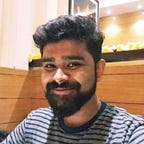from sci-fi to reality: google’s quantum supremacy breakthrough unveiled
quantum computing, quantum supremacy, google Sycamore, supercomputers, quantum mechanics
Quantum computing, a technology long confined to the realm of theoretical science, has taken the tech world by storm with the recent claim of ‘quantum supremacy’ by Google. In this article, we explore the fascinating world of quantum computers, their potential impact on classical computing, and the achievements of Google’s quantum processor, Sycamore.
quantum computers: A Leap Beyond Classical Computing:
quantum computers, unlike classical computers, leverage the principles of quantum mechanics to process information. While classical computers work with bits (1s and 0s), quantum computers use qubits (superposition of 0 and 1 and can also be entangled with other qubits), allowing them to perform complex calculations exponentially faster. This opens the door to solving problems that classical computers find insurmountable due to their energy and space limitations.
how Quantum Computers Will Transform Data Processing:
quantum computers’ ability to process vast amounts of data quickly promises exciting real-world applications. For instance, searching a database of a million social media profiles could be accomplished in a mere thousand steps using a quantum computer, compared to the million steps required by classical computers. This tremendous speed enhancement will revolutionize fields like banking and security, where encryption systems are based on computationally demanding problems.
google’s Quantum Supremacy Achievement:
google’s claim of quantum supremacy rests on its 53-qubit processor, Sycamore. In a groundbreaking experiment, Sycamore solved a problem in 200 seconds that would have taken the world’s most powerful supercomputer over 10,000 years 🤯🤯. While some argue this achievement lacks real-world significance, it serves as a remarkable milestone in quantum computing’s development, inspiring further research and investment.
the Journey to Practical Quantum Computing:
the road to ‘utility quantum computing’ is not without challenges. Quantum computers are currently noisy, error-prone, and fault-intolerant. Error correction remains a central hurdle that must be overcome to build quantum computers with thousands of qubits capable of tackling meaningful real-world problems. Despite the hurdles, quantum advantage in specific application areas like artificial intelligence, cryptography, and pharmaceutical research is on the horizon.
the Future of Computing: Coexistence of Classical and Quantum:
while quantum computers hold immense potential, classical computers will continue to coexist and dominate many application areas. Classical computers consistently push the boundaries of performance, creating a competitive landscape. Quantum computing’s unique ability to process data through quantum properties, like superposition, sets it apart and opens the door to extraordinary achievements.
conclusion:
google’s claim of quantum supremacy has sparked excitement and curiosity about the future of computing. Quantum computers promise unprecedented speed and efficiency in solving complex problems. While challenges remain in practical implementation, quantum advantage in specific domains indicates a bright future for quantum computing. The interplay between classical and quantum computing will redefine the technological landscape, offering new possibilities and empowering us to tackle problems once deemed insurmountable. As the quantum revolution continues, we eagerly await the next breakthroughs and their impact on our lives. Quantum computing is undoubtedly poised to shape the world of technology in unimaginable ways, and we can’t help but wonder what other wonders it will unveil in the years to come.
if you liked this article or found it useful, then a follow would be much appreciated. Alternatively, you could buy me a coffee! All the support is much appreciated. :-)
